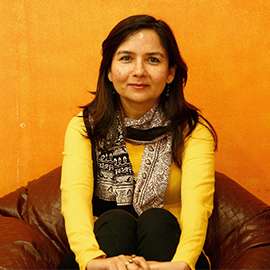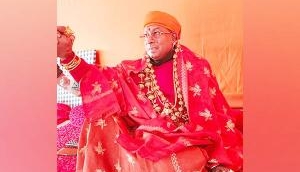Carat & Stick: why the Kohinoor is the world's most contested diamond

It's surprising the flip-flop over the ownership of the 105-carat Kohinoor diamond is not yet fodder for a B-Grade Bollywood movie. Everyone has a different take on how the diamond - now set in a crown and on public display in the Tower of London - travelled to Britain.
Two main theories have always done the rounds.
a) The British, and some Indians too, mostly believe that it was gifted to the East India Company by Maharaja Ranjit Singh.
b) The second is that the Kohinoor was forcibly taken by the British from a frightened boy King Duleep Singh in 1846, 10 years after his father Maharaja Ranjit Singh died.
The second theory seems more plausible as it suggests Maharaja Ranjit Singh never gifted the world's biggest diamond; rather, his son Duleep Singh, all of only eight years old when he signed the treaty of Bhyroval on December 16, 1846 - had no choice but to sign away his kingdom as well as the Kohinoor.
The diamond landed in Britain - perhaps legally, but the intentions were not exactly moral.
The Flip Flop
Earlier this week, the Narendra Modi government told the Supreme Court, which was hearing a petition of NGO All India Human Rights and Social Justice Forum on the return of the Kohinoor, that the diamond was neither "forcibly taken nor stolen" by British rulers, but given as a "gift" to the East India Company by the rulers of Punjab.
When the bench asked if the government was still open to staking a claim to the Kohinoor, Solicitor General Ranjit Kumar had said, "If we claim our treasures like Kohinoor from other countries, every other nation will start claiming their items from us. There will be nothing left in our museums."
However, a day later the Centre had a change of heart. It told the apex court that "it reiterates its resolve to make all possible efforts to bring back the Kohinoor diamond in an amicable manner".
Gift or Loot?
India's first Prime Minister Jawaharlal Nehru went on record to say in 1956 that Kohinoor should not be taken back.
But the claimants have been many since - including people from Pakistan.
The Indian community in Britain has time and again staked claim to the iconic diamond.
Many, including British MP Keith Vaz called for the Kohinoor to be returned to India during Prime Minister Modi's visit to the UK in November 2015.
Vaz's comments were in response to former minister and Member of Parliament Shashi Tharoor's speech at the Oxford Union for Britain to "pay reparations to India".
Vaz said, "I welcome Dr Tharoor's speech and the endorsement of its message by PM Modi. I share their views. These are genuine grievances which must be addressed. Pursuing monetary reparations is complex, time consuming and potentially fruitless, but there is no excuse for not returning precious items such as the Kohinoor diamond, a campaign I have backed for many years."
Tharoor made the case in a debate: "This house believes Britain owes reparations to her former colonies".
"India's share of the world economy when Britain arrived on it shores was 23%. By the time the British left it was down to below 4%. Why? Simply because India had been governed for the benefit of Britain. Britain's rise for 200 years was financed by its depredations in India," Tharoor said.
A dazzling dilemma
However, during his 2013 visit to the Golden Temple in Amritsar, British Prime Minister David Cameron had said, "they are not having it back."
"I don't think that's the right approach," Cameron told reporters.
"The right answer is for the British Museum and other cultural institutions to do exactly what they do, which is to link up with other institutions around the world to make sure that the things which we have and look after so well are properly shared with people around the world."
"I certainly don't believe in 'returnism', as it were. I don't think that's sensible," Cameron said.
Cameron said in a television interview that the diamond would stay in London.
"What tends to happen with these questions is that if you say yes to one, then you would suddenly find the British Museum empty," he said.
The third wheel
Against the backdrop of Delhi arguing for decades that the Kohinoor diamond was stolen from India and Britain claiming it was a "spoil of war" - a Pakistani barrister has also laid claim to it.
The lawyer, Jawaid Iqbal Jafree, named the Queen as a respondent in the petition submitted in a Lahore court in December 2015.
He argues that Britain forcibly stole the diamond from the grandson of Maharaja Ranjeet Singh that "now it should be returned to Pakistan" and that it was "cultural heritage of Punjab province".
Jafree has written more than 786 letters to the Queen and various Pakistani officials asking for the diamond's return.
Meanwhile closer home, in our own Punjab, the Shiromani Akali Dal has criticised the government's move to not get the Kohinoor back.
One thing's for certain: the final chapter in this glittering saga hasn't been written yet. Watch this space.
First published: 21 April 2016, 8:50 IST






![BJP's Kapil Mishra recreates Shankar Mahadevan’s ‘Breathless’ song to highlight Delhi pollution [WATCH] BJP's Kapil Mishra recreates Shankar Mahadevan’s ‘Breathless’ song to highlight Delhi pollution [WATCH]](https://images.catchnews.com/upload/2022/11/03/kapil-mishra_240884_300x172.png)

![Anupam Kher shares pictures of his toned body on 67th birthday [MUST SEE] Anupam Kher shares pictures of his toned body on 67th birthday [MUST SEE]](https://images.catchnews.com/upload/2022/03/07/Anupam_kher_231145_300x172.jpg)






